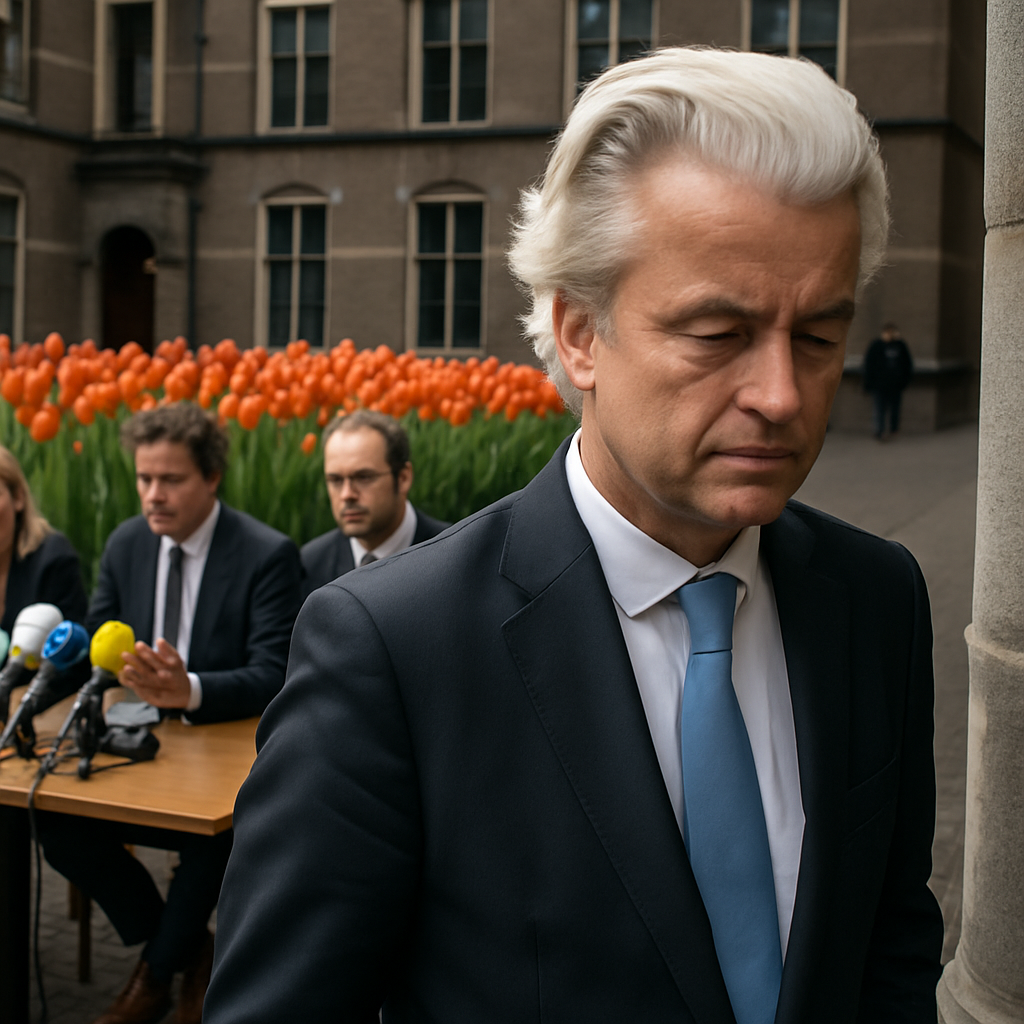*THE HAGUE, Netherlands—In an unprecedented move that has sent tulip prices plummeting and horticulturalists into a frenzy, Dutch far-right leader Geert Wilders has withdrawn his Party for Freedom (PVV) from the governing coalition. This comes after the coalition partners refused to back his audacious proposal to erect a “Tulip Border Wall” along the Dutch border.*
The ambitious plan, unveiled by Wilders in a surprise press conference adorned with rows of florally-inspired banners, called for the construction of a massive wall built entirely of tulips. The wall was intended to serve as both a formidable barrier to control immigration and a tribute to the Netherlands’ celebrated floral industry. “We are the world’s largest exporter of tulips,” Wilders declared, waving a bouquet of patriotic red, white, and blue blooms. “This wall would have been a symbol of our strength and heritage, as well as an innovative use of our national treasure to protect our cultural values.”
The proposed structure was estimated to stretch over 500 kilometers, requiring an annual yield of approximately 65 million tulip bulbs—a figure that experts claim might have led to a tulip shortage. Projected costs were reportedly upwards of €14 billion, factoring in the need for constant bulb replacement due to wilting, seasonal plantings, and tulip theft prevention.
Agriculture Minister Lotte Van Rijn, a member of the Liberal Party, expressed skepticism. “How do you defend a nation with a wall that wilts every spring? The logistics are simply impossible, not to mention the environmental impact of such an undertaking,” Van Rijn stated, visibly perplexed. “Not to mention that half our border runs along rivers. Are we to believe the tulips will float?”
Despite these concerns, Wilders remained steadfast in his vision, accusing his coalition partners of lacking “floral foresight” and “petal patriotism.” “The resistance to this plan is nothing short of botanical betrayal,” Wilders posted on social media, where he also shared digitally altered images of the Great Wall of China transformed entirely with tulips.
Unexpectedly, Wilders’ proposal has sparked a surge of interest from local artists and architects, who see potential in adapting the concept into a massive, interactive art installation. “I think it’s visionary,” said Flora Dijkstra, a renowned landscape artist. “With the right subsidies, we could turn this into a world heritage site.”
In a bizarre twist, sources close to the negotiations revealed that discussions broke down over speculation that climate change might encourage tulip-eating snails to cross into the Netherlands, potentially weakening the structure from within. “We cannot defend against a snail invasion,” an anonymous official confessed. “Their stealth is unparalleled.”
As the coalition scrambles for stability, the future of the tulip market remains uncertain, with auctions reporting a mixed bag of enthusiasm and anxiety. Meanwhile, Wilders has vowed to find a new platform, perhaps with designs of a lily-based bench or a daffodil-guarded moat. His floral fervor seems undeterred, even as his political aspirations hang in limbo. The world watches for his next move, perhaps through a haze of pollen dreams.



